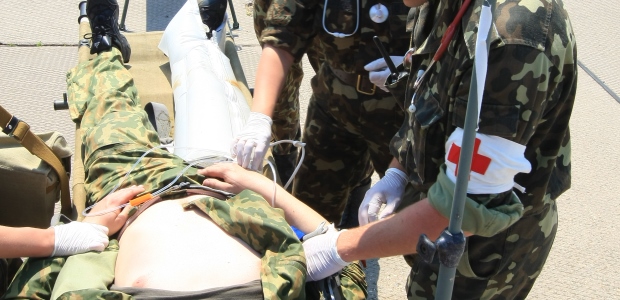
National Academies' Report Urges Integrating Military, Civilian Trauma Care
The report from the National Academies of Sciences, Engineering, and Medicine suggests this integration should be headed by the White House and is needed to reach the national goal of zero preventable deaths after injury.
As many as 20 percent of the trauma deaths occurring in the United States could be prevented through better care, and one way to accomplish that is to integrate military and civilian trauma care systems, a new report from the National Academies of Sciences, Engineering, and Medicine recommends. The report suggests this integration should be headed by the White House and is needed to reach the national goal of zero preventable deaths after injury.
The authors noted that the quality of care in our current military and civilian trauma care systems varies greatly depending on when and where the victim is injured, which places lives unnecessarily at risk, and that mass casualty incidents and increasing foreign and domestic threats to homeland security make it more urgent to translate wartime lessons to civilian trauma systems. The integration should set up a national trauma care system and establish the goal of achieving zero preventable deaths after injury, they wrote, adding that Congress, in consultation with the U.S. Department of Health and Human Services, should help ensure that prehospital care (including EMS) is included as a seamless component of health care delivery, rather than being viewed and paid as merely transportation providers.
They reported that the leading cause of death for Americans under age 46 is trauma — a disabling or life-threatening physical injury that results from an event such as a motor vehicle crash, gun violence, or fall. In 2013, trauma cost approximately $670 billion in medical care expenses and lost productivity, and of the 147,790 U.S. trauma deaths in 2014, as many as 20 percent — about 30,000 — may have been preventable after injury with optimal trauma care, the committee said.
The report, titled "A National Trauma Care System: Integrating Military and Civilian Trauma Systems to Achieve Zero Preventable Deaths After Injury," is available from the National Academies Press at http://www.nap.edu or by calling 800-624-6242. It was prepared by the Committee on Military Trauma Care's Learning Health System and its Translation to the Civilian Sector, whose chair, Dr. Donald M. Berwick, M.D., president emeritus and senior fellow at the Institute for Healthcare Improvement in Newton, Mass., co-wrote an editorial for JAMA that laid out the elements of a learning trauma care system. They are:
- Leadership and a Culture of Learning
- Digital Capture of the Trauma Patient Care Experience
- Coordinated Performance Improvement and Research to Generate Evidence-Based Best Trauma Care Practices
- Timely Dissemination of Trauma Knowledge
- Transparency and Incentives for Quality Trauma Care
- Patient-Centered Trauma Care
- Systems for Ensuring an Expert Trauma Care Workforce
"The progress made by the military's trauma system by applying learning health system principles is remarkable but fragile," he and his co-authors concluded in their editorial. "Valuable wartime advances and lessons learned are at risk of being lost, and regression and inconsistency do a great disservice to the US Armed Forces service members. In addition, the hundreds of thousands of civilians who have sustained trauma deserve the benefits of care improvements achieved in military medicine. The nation should and, with proper leadership, can do better for the soldiers, sailors, airmen, and marines it sends into harm's way. And every US resident should have the best possible chance for survival and functional recovery after injury. When it comes to trauma care, where people live ought not to determine if they live."
The study was sponsored by the American College of Emergency Physicians, American College of Surgeons, National Association of EMS Physicians, National Association of Emergency Medical Technicians, Trauma Center Association of America, U.S. Department of Defense, U.S. Department of Homeland Security, and U.S. Department of Transportation.